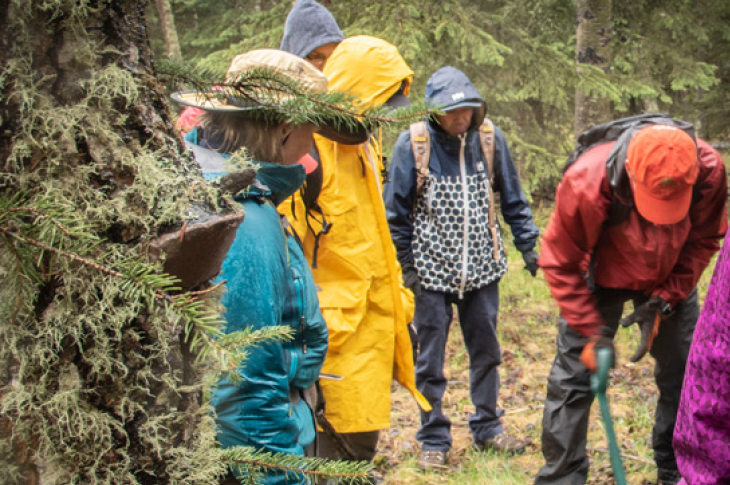Forage like a chef

As wild edible plants became a food trend, SAIT's Chef Andrew Hewson began to educate himself about foraging. For the past eight years, Hewson and other SAIT culinary instructors have studied with Julie Walker, a nature educator whose Full Circle Adventures company offers plant walks and workshops.
Food doesn’t get any more local than native plants growing wild. For chefs like Andrew Hewson, going out into nature to gather edible stalks, leaves, roots and berries helps to truly understand local ingredients.
“People survived off the land for thousands of generations before we had grocery stores, so I see foraging as connecting back to old ways of survival,” says Hewson, a culinary instructor with SAIT’s School of Hospitality and Tourism. “The people who understood the edible, nutritional and medicinal uses of plants were highly valued in their societies.”
“It’s a huge educational experience for us,” Hewson says. “You need knowledge to go out foraging — first to identify where you can forage and where plants will grow, then to identify which plants are safe, then to understand how to harvest them sustainably.”
Here are Hewson’s top five tips for fledgling foragers:
1. Go with a Pro
Forage with a guide or someone experienced in identifying plants — it’s unsafe to harvest without recognizing every part of a plant, from the stem to the leaves to the flowers or fruits.
Watch a team of SAIT foragers create a delicious meal using wild ingredients:
2. Pick your spot
Foraging is illegal in city, provincial and national parks. Some conservation sites or Crown lands may permit it but unless you go with a guide, you are responsible for researching where it is allowed. On private land, you need permission from the land owner.
3. Go safe
Only pick where no pesticides or herbicides have been sprayed. Don’t pick along roadsides where plants might be contaminated by exhaust fumes or other toxins.
4. ‘Tis the season
In spring — late May or early June — a plant puts its energies into growth, so leaves and shoots are tender and packed with nutrients. As summer progresses, plants become more bitter and fibrous. Late summer is when to find berries; in fall, dig for roots.
5. Stay sustainable
Even in a large patch of healthy plants, take only a few leaves, stems or berries from each plant — that ensures plants can regenerate and regrow.
Learning for Life
We prepare students for successful careers and lives.
SAIT'S
2020-2025
Strategic plan

Oki, Âba wathtech, Danit'ada, Tawnshi, Hello.
SAIT is located on the traditional territories of the Niitsitapi (Blackfoot) and the people of Treaty 7 which includes the Siksika, the Piikani, the Kainai, the Tsuut’ina and the Îyârhe Nakoda of Bearspaw, Chiniki and Goodstoney.
We are situated in an area the Blackfoot tribes traditionally called Moh’kinsstis, where the Bow River meets the Elbow River. We now call it the city of Calgary, which is also home to the Métis Nation of Alberta.